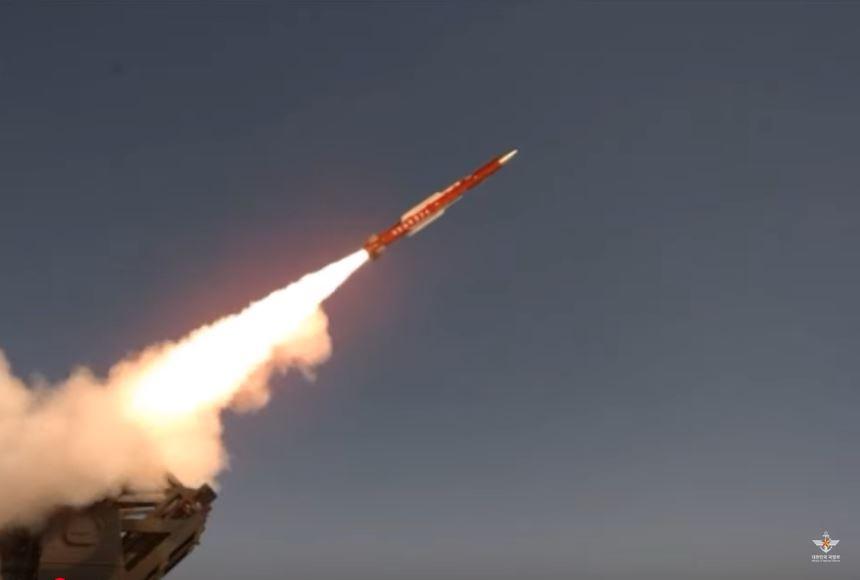South Korea’s military has conducted a successful missile interception test of its L-SAM (Long-range Surface-to-air Missile) system under development, a key element of the country’s envisioned layered missile defense shield, called the Korea Air and Missile Defense (KAMD) designed to counter advancing threats from North Korea. The move came as the North Korean regime is ratcheting up its nuclear and missile threats highlighted by its firing of a Hwasong-17 intercontinental ballistic missile into the East Sea last Friday. South Korea’s Yonhap news agency reported that the L-SAM interceptor can fly on an intended trajectory and fall accurately on a preset spot.
L-SAM is a South Korean missile defense system under development. It aims to shoot down ballistic missiles from North Korea in their terminal phase. It will use a trailer-mounted S band AESA radar. It will be an upper-tier interceptor for a layered defense, as part of the Korean Air and Missile Defense (KAMD) project, slated to be ready in the early 2020s, with the lower tier composed of Patriot PAC-3 and KM-SAM batteries. Performance levels were to be twice as superior to the Patriot and KM-SAM missiles, and it is designed based on a hot launch type VLS (Vertical Launching System) that is different from KM-SAM, which was developed based on a cold launch type VLS in Russia.

The L-SAM system is expected to use two types of interceptors: one for aircraft and the other for ballistic missiles. The missile interceptor will be capable of intercepting missiles at altitudes between 40-100 km. An L-SAM battery will consist of a multifunction radar, a command-and-control (C2) center, a combat control station, and four truck-mounted launchers, two for each missile type. The Long-range Surface-to-air Missile is aimed at shooting down ballistic missiles at the altitude of 50-60 kilometers, similar to the Terminal High Altitude Area Defense (THAAD) of the United States.
The South Korean military has been seeking to deploy the L-SAM by 2026 as part of the country’s multilayered, low-tier missile defense program. The launch came amid speculation the military could advance the timing for the L-SAM deployment, after the North Korean missile launches in January raised questions over South Korea’s interception capabilities. If deployed, the L-SAM interceptor would form a key part of South Korea’s anti-missile program, which includes the Patriot Advanced Capability-3 missile and a medium-range surface-to-air missile. The U.S. Forces Korea also runs a THAAD anti-missile battery in South Korea.















